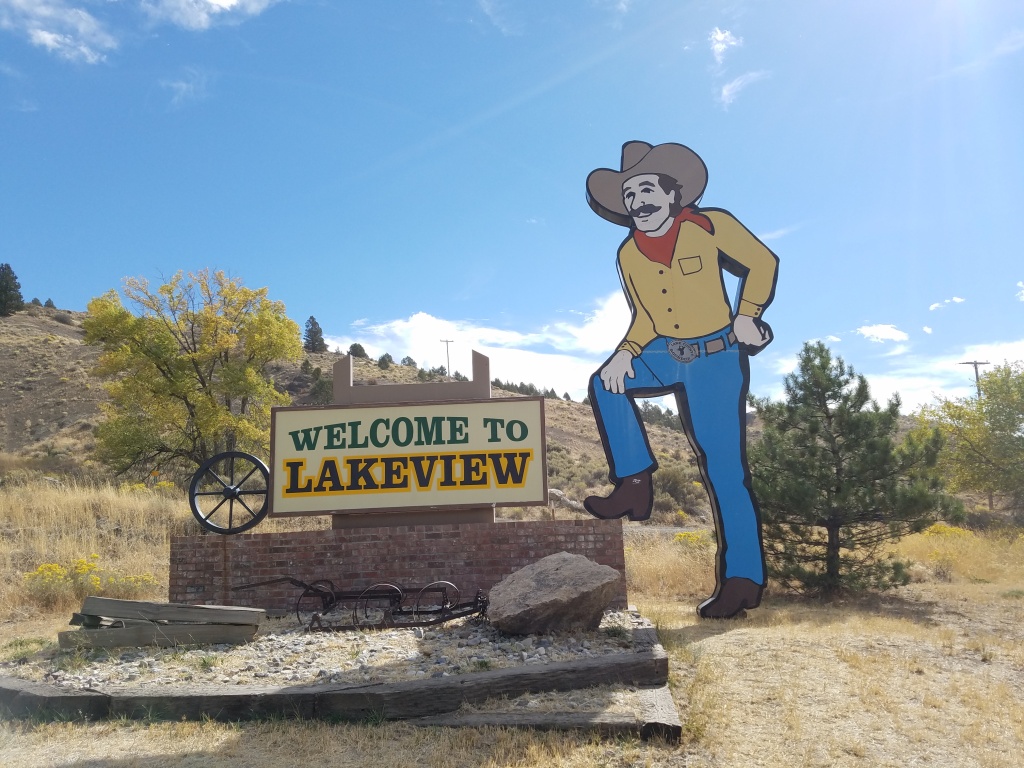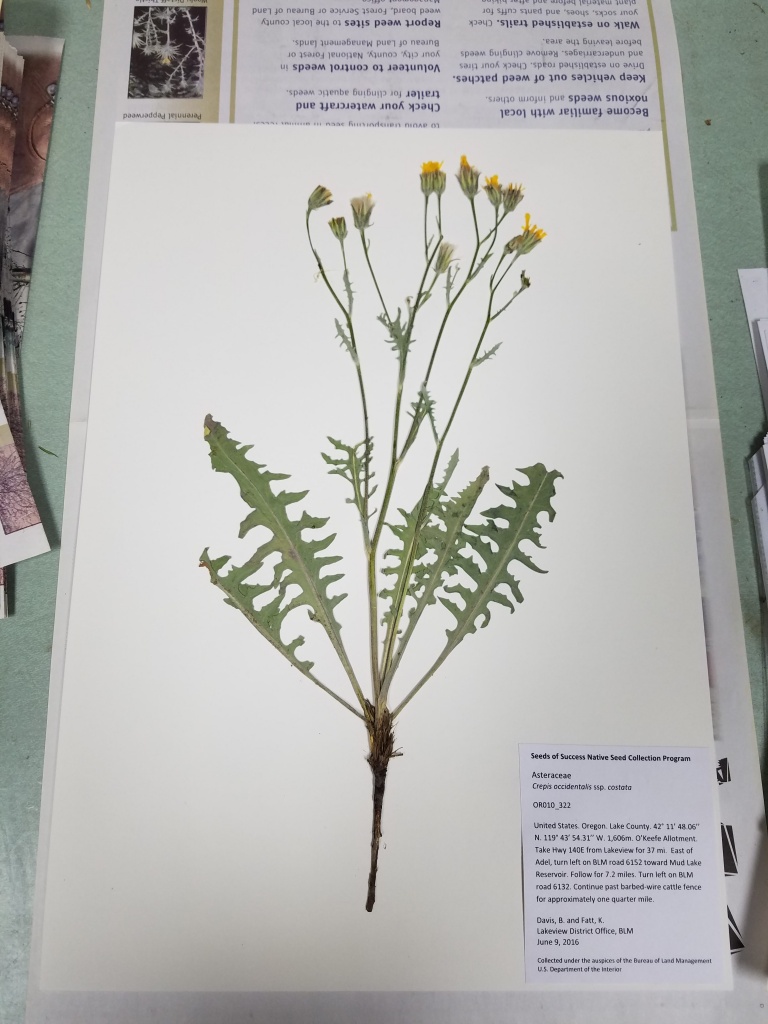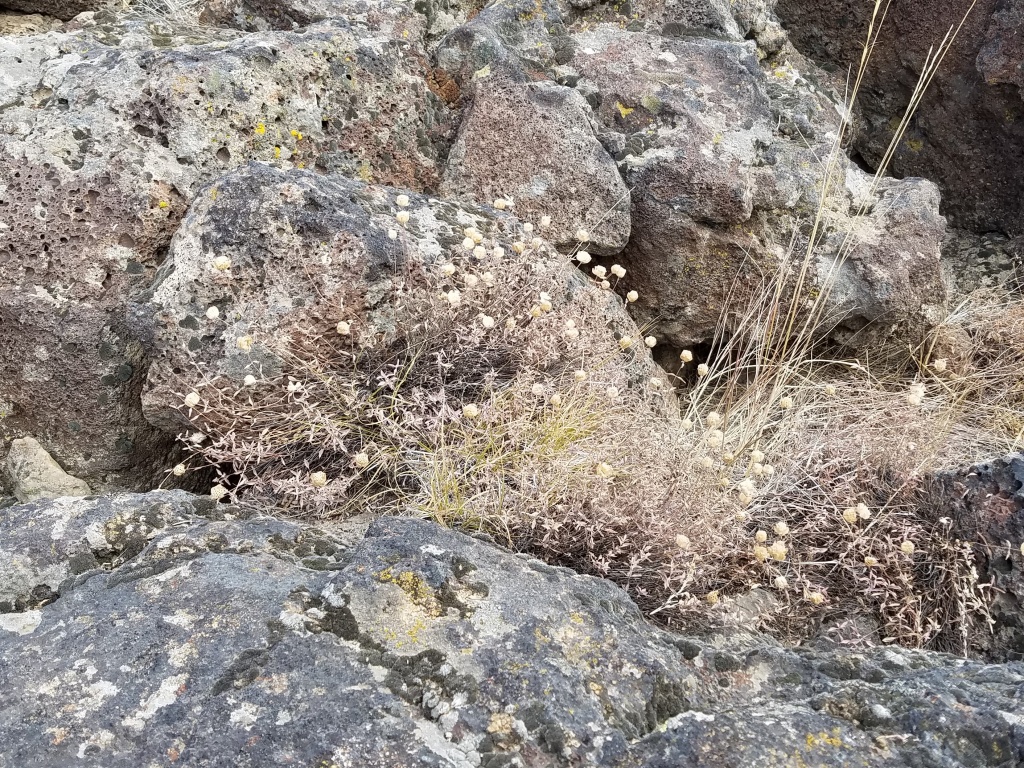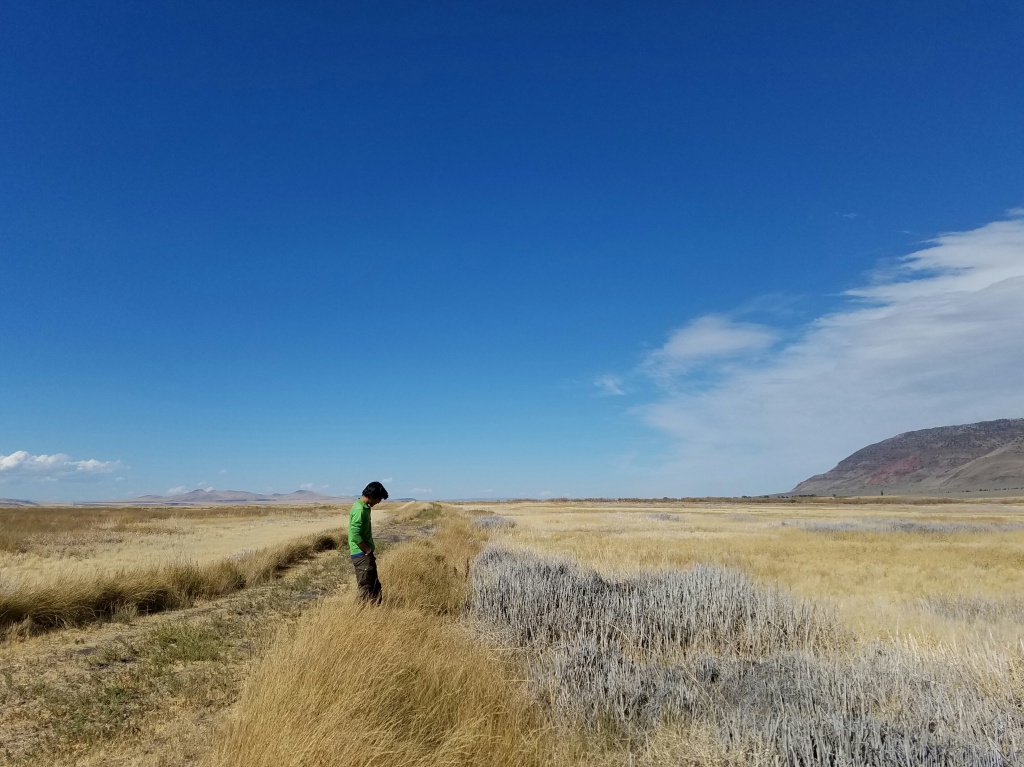At first there was nothing. My field partner and I were four months deep into our internship with only 20 out of 75 collections completed. We were beginning to worry. With only two months left, how were we going to reach our goal? Then, to make matters worse, my field partner sustained a leg injury making her bedridden for a week, and banishing me to the seed lab to process and clean seeds. Yet another week passed, and our collection count remained embarrassingly low.

Moving clockwise from the top: Schizachyrium littorale (shore little bluestem), Scirpus cyperinus (woolly grass), and Panicum virgatum (panic grass).
Then, there was everything. The following week, with only seven weeks of fieldwork left in our internship, we anxiously rushed back into the marshes, beaches and forests of Delaware. Before taking a week off from fieldwork, we had been grasping at straws—the plants from which we needed to make our seed collections were either still unripe for reaping, destroyed by pests or lawn mowers or simply non-existent. The following week, our luck began to change. Once back in the field, the very first site we visited yielded three seed collections. During our week away, not only did seeds finally ripen, but as the seeds developed, plant populations we had completely overlooked became beautifully obvious. Panic grass panicles spread out to form a fuzzy haze of seeds. Woolly grass inflorescences poofed up into fluffy red clouds, and shore little bluestem seeds exploded out of their sheaths in snowy clumps. By the end of the week we had made 12 collections, having worked 12 hour days to complete them. Finally a stroke of relief. If we kept up that pace we would surely make our goal by the conclusion of our internship.

Covered in marsh gunk, per usual. Had to get down and dirty to collect this Spartina cynosuroides specimen.
Working long days with only brief fuel breaks mid-day, my field partner and I were starting to feel worn down. Despite constantly sipping water, we were perpetually dehydrated and our backs occasionally ached from being continuously bent in a tiered bow to the earth. That is when Spartina decided it was time to ripen. Spartina is a genus of marsh grass which includes various species ranging from only 2 feet tall (Spartina patens) to 8 feet (Spartina cynosuroides). This was good news as it meant we would have more seed collections to make, but bad news, for those collections- especially those of Spartina alterniflora, were bound to take an excessive amount of time.
Spartina alterniflora, also known as smooth cordgrass, is highly sought out for restoration projects across Delaware and New Jersey. The grass is cited to function as an ecosystem engineer; it stabilizes marsh soils to prevent erosion and protect against coastal storms, creates habitat for coastal species, and filters heavy metals and other toxins out of the water column. The ecological services provided by S. alterniflora make the grass highly sought after by various restoration and environmental groups. So many, in fact, that we could barely fit our collections into our small rental car.

Spartina alterniflora in all its glory.
Typically our seed protocol requires each plant population we collect from to have at least 50 individuals ( to maintain genetic diversity), that we collect a minimum of 10, 000 seeds, and that our collection does not exceed 20% of the seed available in the population. Those requirements still stand when collecting S. alterniflora, only that instead of collecting a minimum of 10,000 seeds, we needed to collect a minimum of 50 lbs of inflorescences for each collection we made.
So, one early morning in October, we began to collect Spartina alterniflora. The collections were long and difficult. For our first collection, we spent two entire days of work, that is 16 hours, collecting Spartina from a single site. It was stinky business. By the end of our first collection we had gathered about 200 lbs. The stench was unbearable. Like the marshes from which they are collected, S. alterniflora smells like hydrogen sulfide, better known as the scent of rotten eggs. Just a few inflorescences could stink up an entire car, so imagine hauling around 200+ lbs of it at once. We had no choice but to drive with the windows rolled down, despite the frigid air that pinched at our cheeks.
By the conclusion of our first week collecting Spartina alterniflora, my field partner and I reeked. After each day in the field we could not wait to clean ourselves of the wretched salt marsh cordgrass perfume. However, that was impossible to do considering we were spending our nights in a farm house. A farmhouse that relied on well water. Well water that come from the surrounding marsh. A marsh that was full of sulfur. This meant that not only did my field partner and I spend our day in a field of stinky Spartina, but we then showered and drank water that shared its pungent scent. We were becoming one with the marsh. Luckily, or unluckily, our bodies have a tendency to acclimate to new environments. I started to notice the scent less and less. And then, one morning as we walked through a field of Spartina alterniflora, I took in a deep breath and as I let out a yawn I thought to myself, “ It smells like hard boiled eggs.” The thought made me hungry.

I needed a break from Spartina collections. This was the result: An improvised sunhat made from the remains of a horseshoe crab.
Spartina alterniflora collections lasted two weeks, during which we received heavy rains and strong winds from the passing of Hurricane Matthew farther south. The strength of the storm forced us out of the field and into a Panera Bread for nearly an entire day, and gave us a late start the following morning. There was some slight flooding on marsh-side roads, which prolonged our commute times to field sites, but luckily that was as difficult as it got. Two weeks since the conclusion of Spartina collections, my field partner and I are close to wrapping up the season. We expect to meet our collection goal by the end of this week, and hopefully surpass it the following week. Then we will have one week to process seeds and digitize data sheets before our internship concludes. The storm is at last behind us and all is now calm and becoming still. Though the process of seed collecting was at times difficult, looking back this internship has been both educational and exciting. It will be bittersweet seeing it come to an end. It has been a pleasure. Except for the Spartina. I won’t miss Spartina.
























